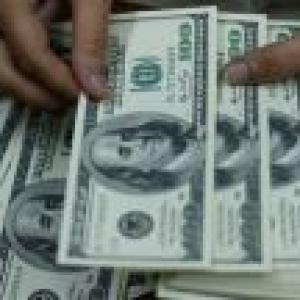Days after the Reserve Bank of India (RBI) raised its key policy rates to tame an unexpected rise in inflation in February, a new analysis claims that none of the factors considered relevant by the central bank, are crucial for understanding inflation in India. A newsletter, Developing Trends, brought out by Surjit Bhalla of Oxus Investments, and others, also projected inflation to fall to five per cent in six months, if not sooner, from the current level of 8.31 per cent, saying the rate of price rise was close to or has peaked in India.
A newsletter, Developing Trends, brought out by Surjit Bhalla of Oxus Investments, and others, also projected inflation to fall to five per cent in six months, if not sooner, from the current level of 8.31 per cent, saying the rate of price rise was close to or has peaked in India.
The analysis says traditional factors like money supply, fiscal deficits and new theories about the changing pattern of consumption by Indians that lead to a mismatch between supply and demand of protein-based products are not very important.
"None of the traditional or new factors, held important by many analysts, and RBI, are relevant for explaining Indian inflation," the newsletter says.
It says growth in money supply was able to partly explain inflation trends during 1980 to 1995, but nothing later.
"A flatter line than that between money supply growth and inflation post-1995 cannot be found."
Also, fiscal deficit, says the analysis, is able to partly explain inflation, but has the wrong sign that is, higher the fiscal deficits lower the inflation.
"Obviously, this is an example of lies and statistics and all that, but nevertheless it points to the rejection of the notion (or rather the unfounded belief) that fiscal deficits have led to higher inflation in India."
However, the newsletter clarifies that it is not asserting that fiscal deficits do not matter or they do not matter in India.
Such deficits are relevant for interest rates and therefore growth, which in turn can have an effect on dampening inflation.
"The simple point is that fiscal deficits are not useful for explaining inflation in post-reform India at all," it says.
Then, there are new theories that say that new determinants include dietary patterns to protein and supply shortages of protein.
However, the study says protein demand has been going on for the last 30 years and not just in 2009, which was the real anomaly year of Indian inflation.
Then there are theories that link inflation to convergence with developed country price levels in a hurry - the convergence that was to take place over 50 to 100 years is now compressed into a few short years due to globalisation and recent high economic growth.
The analysis says covergence to developed country theory is okay, but not in such a great hurry and truly depends on several other factors - higher productivity growth in fact leads to lower inflation and undervaluation of the real exchange rate through policy intervention most likely dampens the inflation rate.
Developing Trends linked Indian inflation since 1996, even since 1980s, to intational inflation.
If this is measured by the inflation of the median country in a particular year, then 71 per cent in Indian inflation since 1982 is explained. This is the highest explanation for any G20 country, with Korea, Japan and the US close behind.
The analysis furhter says there is a strong sustained relatoinship between world inflation and the price of crude.
"For non-OECD countries, including India, the relationship between inflation and crude is extremely robust - each $10 increase in the price of oil leads to approximately 0.5% increase in inflation. The impact is a lot less for OECD countries - a negligible and insignificant increaes of 0.03 per cent."
An increase in the price of crude, however, caused sets in motion a sequence of price events in this hyper price sensitive world, says the newsletter.
"Somewhat peculiarly, but not entirely unexpectedly, world food prices increase by 3.3 percentage points for each $ increase in the price of crude."
Expectedly, copper prices rise by $0.4/lb for each $10 rise in crude.










